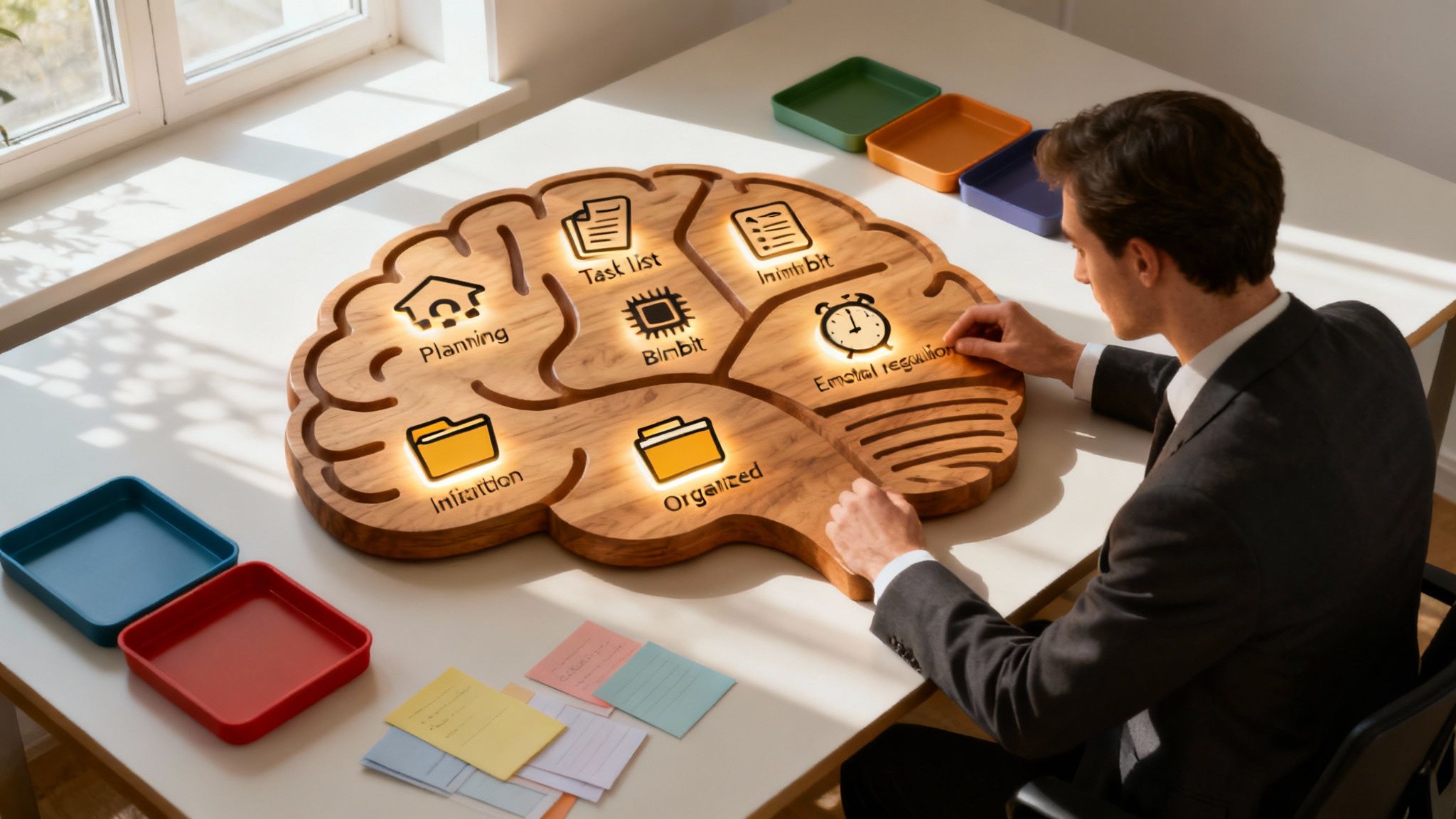If you’ve clicked on this article, chances are, you’re very familiar with the feeling of “I can’t even” that comes with attention-deficit/hyperactivity disorder (ADHD).
You know, when you urgently need to do something — anything, really — but you just can’t?
You feel locked in place, completely drained of any motivation. The dishes and laundry continue to pile up. The fatigue, depression, and shame are unbearable. So what is this freeze all about, and what can we do about it? Consider this your guide to getting back into motion.
Why am I frozen?
While some mistake this shutdown as an excuse for laziness, it’s anything but. The emotions that come with it are incredibly painful.
People with ADHD experience something called “executive dysfunction.” This can affect our ability to initiate tasks, prioritize them, and sustain our efforts, which is why we feel so stuck and plagued by indecisiveness.
Dopamine is a neurotransmitter that helps mediate executive function1, impacting memory, attention, rewards, activity, and more.
Think of dopamine as your “hype person” that gives your brain the push that you need.
ADHDers tend to have a dopamine deficit, which is why we deal with this freeze response more than our neurotypical peers, especially those of us with a history of childhood trauma. When we’re talking about moving through this shutdown, then, what we’re really talking about is increasing our dopamine levels, and breaking this pattern of anxious avoidance.
How to come out of ADHD paralysis
1. Movement
Every ADHDer I know has been told at least ten times that they should exercise. But that’s not what we’re talking about here!
Any movement (even flapping your hands around for a minute or dancing in your seat) can help shift us out of our brain’s freeze response. Start by wiggling your toes and see what you can do from there!
Why does it work?
Movement generally increases dopamine levels and lowers stress hormones, especially if it’s aerobic or a type of movement we enjoy.
But it can also signal to our brains that we’re moving out of a freeze state; these freeze states are often a stress response intended to protect us from danger (thanks, brain!). Movement can signal to our brains that the threat is no longer present.
2. Music
Here’s a fun homework assignment for the next time you’re procrastinating!
Put together a playlist of your favorite upbeat tunes, and be sure to bookmark it for easy access. The next time you’re in shutdown mode, press shuffle and see what happens. You might be surprised!
Why does it work?
When we listen to music that we enjoy, researchers have found that we release a lot of the 'feel-good' hormones and neurotransmitters, including dopamine. Anecdotally, it also encourages movement, which we know is important for moving out of a freeze state.
3. Protein
Go get a snack, quick! Protein is especially useful when we’re looking to increase dopamine levels. It’s also important to remember that food is fuel, so if we’re running low on fuel, we can’t expect to get much done.
Why does it work?
Good ol’ amino acids! In particular, we’re talking about one called tyrosine, which is crucial for dopamine production. Tyrosine can be converted into dopamine, helping increase its availability in the brain. This is why a protein-rich breakfast can do wonders for folks with ADHD.
4. Sunlight
Here comes the sun! Consider taking a quick walk around the block to get a little sunshine and vitamin D. If you’re in an area that has limited sunlight, consider an artificial source, like a SAD lamp. (Not literally sad, like a lamp that just went through a breakup. We’re talking about lamps designed to provide light therapy.)
Why does it work?
Sun exposure is important for regulating our neurotransmitters, including dopamine. One study of 68 healthy adults found that those with the greatest amount of sun exposure had the highest levels of dopamine!2 Getting a little sun can be more helpful than you might expect.
5. Novelty
Boredom is bad news for dopamine production. You may be struggling with motivation because you’re in an environment or engaging in behaviors that are too familiar, or uninteresting to you.
Our brains tend to be more generative in environments where something interesting is around us, or when we’re engaging in tasks that are new and exciting. Try switching up your location or finding ways to approach the task that you haven’t tried before!
Why does it work?
Our brains love new things. In fact, they release more dopamine in contexts that are new, novel, or just plain interesting to encourage us to explore. A change of scenery or a fancy new tool or app, for example, might do the trick. This can increase reward-seeking behavior, which encourages our brain to make that sweet, sweet dopamine.
6. Connection
Have you ever had a conversation that left you energized and ready to tackle a project you were once dreading? If you’re the kind of person that benefits from an intense brainstorm session, this may be the key to unlocking your freeze state.
Why does it work?
Human connection is an important social stimuli that may encourage dopamine production3, especially when those interactions are positive ones. Anecdotally, getting meaningful support can help us get unstuck by clarifying our priorities, which we struggle with due to our executive function.
7. Medication
If you’re coming up against a shutdown response over and over again, you may want to consider medication.
Why does it work?
While ADHD brains tend to use up dopamine very quickly in comparison to our neurotypical peers, ADHD stimulant medication can slow down that process, making dopamine more available to us. Some have also found success with nonstimulant medications, like Wellbutrin, an antidepressant.
The key? Look for what energizes you
The truth is, what energizes, excites, and entertains us will vary depending on the individual. If you’re looking to break out of a shutdown state, consider activities that help you feel more energetic and excited about the task at hand.
That can include gamifying tasks (like a “beat the clock” challenge with a timer) or an accountability buddy that keeps you engaged. You might consider reading up on different forms of procrastination to find strategies specific to your situation.
Whatever you do, do it with kindness towards yourself. It isn’t your fault that you’re freezing or shutting down. It’s a protective mechanism in the brain that helps you to avoid situations that increase your stress and anxiety. It’s just not a particularly helpful mechanism when it interferes with tasks we’d like to do!
No matter what happens, you won’t be stuck forever, even if it feels that way. Taking a few small steps is often all it takes to get moving again.








